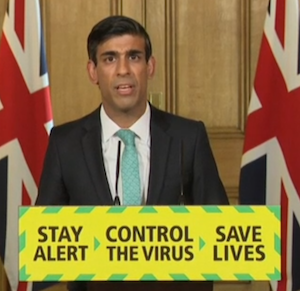Freelancers and the Self-employed Income Support Scheme

Last Updated on 2 November 2020
On 26 March 2020 the Chancellor announced his new scheme to help people who are self-employed and have no work or reduced income.
On 29 May he announced a second grant, available from 17 August, modelled on the first, but at a lower rate.
On 2 November 2020 he announced that a third grant would be available from late November, covering November to Jan 2021.

He is helping sole traders only but with strict eligibility criteria:
- profits on average no more than £50K per year, calculated using tax returns across three years if available, or two years, or just for 2018-19 if they sole trader has not been registered for longer than that year
- with the majority of their income coming from sole trader profits, not from other income (and ‘other income’ includes pension income, dividends, PAYE income and property income)
They will be able to access taxable grants, covering 80% of average profits for the last 3 years, up to a maximum of £7,500, which is £2500 per month.
The second grant will be calculated on the same profit figure but will be at 70% of average profits. The maximum will be capped at £6,570, or £2,190 per month.
Things to know about the third SEISS grant:
- You will have to apply again. From late November 2020.
- It will be taxable like the previous grants.
- If you were eligible for the first grant you will almost certainly get the third grant, as long as you have had “reduced demand” for your business.
- If you were not eligible for the first grant you will not be eligible for this one either, unless purely on the ‘reduced demand’ criterion.
- The earliest you could receive your grant 3 money will probably be in December 2020.
This scheme does NOT help people who might use the term ‘self-employed’, but who are not registered as sole traders, which is the strict government definition of self-employed.
The scheme does include people who have been part of a partnership business, as partnerships are made up of two or more sole traders.
Specifically not covered are:
- People who are not technically ‘sole traders’, but run their own one-person limited company
- People who receive all their income as PAYE freelancers, paid via a payroll, and moving from short term contract to short term contract
- People who became sole traders after 6 April 2019, and so aren’t yet in the HMRC system with a 2018/19 tax return.
You have always had to declare that your sole trader business has been “affected by coronavirus”. For grant 3 this has been tightened to “reduced demand” for your business.
(Technically this would mean that if you had COVID-19 and couldn’t work, but there was not “reduced demand” you wouldn’t be eligible.)
The cut-off date for the first grant is 13 July 2020. For the second grant you have to declare that your business has been affected by coronavirus from 14th July onwards.


If you live in Scotland or Wales check whether you might be eligible for a freelancer grant under local arrangements.
This is the SEISS section from the Gov.UK website:
Self-employment Profit vs Grant Indicator:
I have thrown together a VERY basic online indicator tool which might help you to see what 80% and 70% of your average monthly sole trader profits over one, two or three years would look like.
Use this to help your cash flow planning.
Image credit: Peggy und Marco Lachmann-Anke from Pixabay
Please note:
Although every effort has been made to provide accurate tips and information, David Thomas Media Ltd accepts no responsibility for any errors, omissions or out-of-date facts. Trainees are advised to seek up-to-date professional advice on all financial and tax matters before making decisions relating to these subjects. Nothing in our notes, courses, webinars, downloads or social media should be considered as financial advice.
We believe our tips are useful - but they are only tips!
Posted on 26 March 2020


I’m no expert, so please tell me if I’m wrong! But based on everything from Sunak’s speech, especially the word ‘profit’ which people have mislabelled as ‘income’ and ‘earnings’ in articles since…..it seems to me that the following businesses will have no help at all:
– Businesses with high fixed costs, which they’ll be paying for 3 months with no income to cover them.
Other businesses will probably still have some fixed costs to cover too which means that this 80% is not the same as covering 80% of someone’s wages on PAYE.
Agreed Vicky – lots to unpick here.